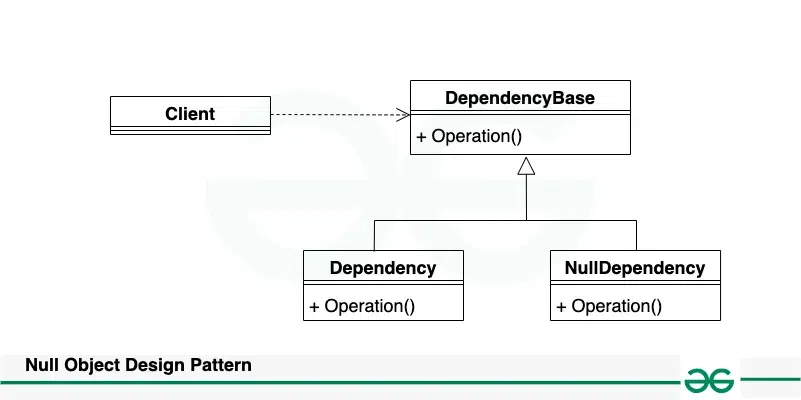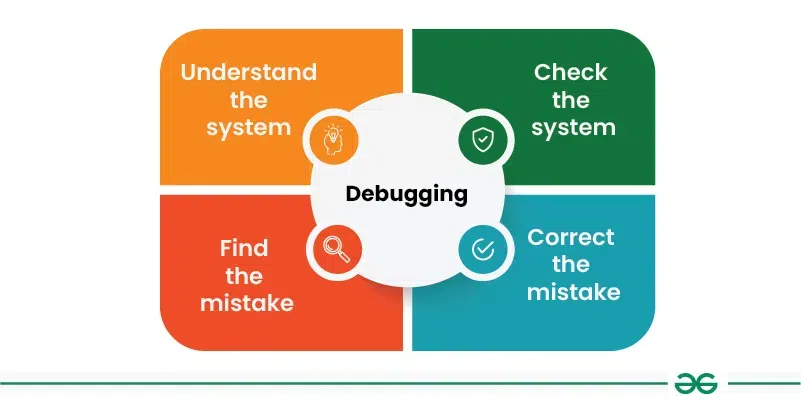In the world of software development, few errors are as infamous as the NullPointerException. Tony Hoare, the inventor of the null reference, famously called it his “billion-dollar mistake” due to the countless hours of debugging and system crashes it has caused over the decades. This error forces developers into a defensive posture, littering codebases with repetitive if (obj != null) checks, which harms readability and increases complexity. The latest Null Object pattern news in the community reminds us that elegant, time-tested solutions exist to combat this very problem. This pattern offers a robust alternative to null references by providing a default, “do-nothing” object in place of null.
This article provides a comprehensive exploration of the Null Object design pattern within the context of the modern Java ecosystem. We will dissect its core principles, walk through practical implementations using frameworks like Spring Boot, and compare it with alternatives like Java 8’s Optional. We’ll also cover advanced techniques, best practices, and common pitfalls to avoid. Whether you’re a seasoned developer keeping up with Java wisdom tips news or you’re on a Java self-taught news journey, understanding this pattern is crucial for writing cleaner, more resilient, and more maintainable code.
Understanding the Null Object Pattern: Core Concepts and Benefits
The Null Object pattern is a behavioral design pattern that aims to encapsulate the absence of an object by providing a substitutable alternative that offers a neutral, or “null,” behavior. Instead of returning null from a method and forcing the client to check for it, you return a special object that conforms to the expected interface but whose methods do nothing or return default “empty” values. This simple yet powerful idea is a cornerstone of robust object-oriented design.
What is a Null Object?
At its heart, a Null Object is a concrete implementation of an interface that represents a “no-op” (no operation) case. It allows client code to interact with it just as it would with a “real” object, without needing to differentiate between a real instance and the absence of one. This uniformity is the key to simplifying code. The client doesn’t need to know or care if it’s holding a real object or a null one; it can call methods on it regardless, eliminating the need for conditional null-checking logic.
Consider a logging system. You might have an interface Logger with a method log(String message). A concrete implementation, ConsoleLogger, would write the message to the console. If logging is disabled, a method that provides a logger might return null. The client would then have to write:
Logger logger = loggerFactory.getLogger();
if (logger != null) {
logger.log("An important event occurred.");
}With the Null Object pattern, the factory would instead return an instance of NullLogger, whose log() method is simply empty. The client code becomes beautifully simple:
Logger logger = loggerFactory.getLogger();
// No null check needed! This works whether the logger is real or null.
logger.log("An important event occurred.");Core Benefits of the Pattern
Adopting this pattern brings several significant advantages, which is why it remains relevant in Java SE news and discussions around enterprise development.
- Eliminates
NullPointerExceptions: This is the most direct benefit. By never returningnull, you remove the possibility of a client accidentally dereferencing it. - Simplifies Client Code: It drastically reduces boilerplate code. The removal of countless
if-elseblocks makes the client’s logic cleaner, more readable, and focused on its primary responsibility. - Adherence to Design Principles: The pattern aligns well with the Liskov Substitution Principle, which states that objects of a superclass should be replaceable with objects of a subclass without affecting the correctness of the program. A Null Object is a perfect substitute for a real object from the client’s perspective.
Practical Implementation in a Modern Java Application
Let’s move from theory to practice and see how to implement the Null Object pattern in a real-world scenario, such as a web application built with Spring Boot. This is where the pattern truly shines, helping manage dependencies and service layer interactions. As the Spring Boot news landscape evolves, patterns that promote loose coupling and cleaner code remain essential.
Scenario: A User Service
Imagine a UserService that retrieves user data from a database. A common method is findById(long id). If no user is found, the traditional approach is to return null.
The “Before” Code (Using `null`):

This approach forces the calling code to be defensive and cluttered.
// In a Controller or another service
User user = userService.findById(userId);
if (user != null) {
System.out.println("Welcome, " + user.getUsername());
if (user.isAdmin()) {
// show admin panel
}
} else {
System.out.println("Welcome, Guest");
// show guest view
}This code is fragile. Forgetting the null check leads to a runtime crash. Now, let’s refactor this using the Null Object pattern.
Refactoring with the Null Object Pattern
First, we define a common interface or abstract class for our user representation. This is crucial for ensuring the real and null objects are interchangeable.
// Step 1: Define the common interface
public interface User {
boolean isNull();
String getUsername();
boolean hasAccessTo(String resource);
}
// Step 2: Create the real object
public class RealUser implements User {
private final String username;
// other fields...
public RealUser(String username) {
this.username = username;
}
@Override
public boolean isNull() {
return false;
}
@Override
public String getUsername() {
return this.username;
}
@Override
public boolean hasAccessTo(String resource) {
// Complex access logic here...
return true; // simplified for example
}
}
// Step 3: Create the Null Object
public class NullUser implements User {
@Override
public boolean isNull() {
return true;
}
@Override
public String getUsername() {
return "Guest";
}
@Override
public boolean hasAccessTo(String resource) {
// Guests have no access
return false;
}
}
// Step 4: Modify the service to return a NullUser instead of null
@Service
public class UserServiceImpl implements UserService {
// ... repository injection
public User findById(long id) {
// Assume userRepository.findById(id) returns an Optional<RealUserEntity>
return userRepository.findById(id)
.map(entity -> new RealUser(entity.getUsername()))
.orElse(new NullUser());
}
}With this structure, the client code is dramatically simplified:
The “After” Code (Clean and Robust):
// In a Controller or another service
User user = userService.findById(userId);
// No null check needed!
System.out.println("Welcome, " + user.getUsername());
if (user.hasAccessTo("/admin")) {
// show admin panel
} else {
// show standard view
}Comparison with Java 8’s Optional
Since the release of Java 8, Optional<T> has become the standard way to handle the potential absence of a value. The latest Java 8 news and subsequent releases (Java 11 news, Java 17 news, Java 21 news) have only solidified its place. So, when should you use `Optional` versus the Null Object pattern?
- Use
Optional<T>when the absence of a value is an important piece of information that the caller must explicitly handle. It’s excellent for return types in public APIs because it forces the developer to think about the “not found” case. It clearly signals “a value might be here, or it might not.” - Use the Null Object pattern when you want to provide a default, neutral behavior and hide the absence of an object from the client. It’s ideal when the client doesn’t need to differentiate between a real object and a “no-op” one, leading to simpler client logic. It’s about providing a safe default, not just signaling absence.
They are not mutually exclusive. As shown in the `UserServiceImpl` example, you can use `Optional` internally and expose a Null Object at the service boundary, getting the best of both worlds.
Advanced Considerations and Integration with the Java Ecosystem
While the basic implementation is straightforward, integrating the Null Object pattern into a complex application requires considering aspects like performance, persistence, and testing. These considerations are frequently discussed in the context of Java performance news and framework-specific updates like Hibernate news.
Singleton Null Objects for Performance
Null Objects are typically stateless—their behavior doesn’t depend on any internal state that changes. Because of this, you don’t need to create a new instance every time one is needed. A single, shared instance is sufficient, which saves memory and reduces garbage collection overhead. This is easily achieved using the Singleton pattern.
public class NullUser implements User {
// The single, static, final instance
public static final NullUser INSTANCE = new NullUser();
// Private constructor to prevent instantiation
private NullUser() {}
@Override
public boolean isNull() {
return true;
}
@Override
public String getUsername() {
return "Guest";
}
@Override
public boolean hasAccessTo(String resource) {
return false;
}
}
// The service now returns the singleton instance
public User findById(long id) {
return userRepository.findById(id)
.map(entity -> new RealUser(entity.getUsername()))
.orElse(NullUser.INSTANCE);
}Challenges with Persistence (JPA/Hibernate)
A common pitfall arises when using Object-Relational Mapping (ORM) frameworks like Hibernate. If you have a `User` object as a field in another entity (e.g., an `Order` has a `User`), trying to persist an `Order` with a `NullUser` instance will cause problems. The ORM will try to save the `NullUser` to the database, which is not what you want. To prevent this, you can:

- Mark the class as
@Transient: This tells the ORM to ignore this class completely, but that’s often too restrictive. - Handle it in the getter/setter: In your `Order` entity, the getter for the `user` field can check if the associated user is null and return `NullUser.INSTANCE` instead. This keeps the persistence layer clean while providing safety to the business logic layer.
Testing with Mockito
The Null Object pattern simplifies testing. You no longer need to write separate tests for `null` and non-`null` return paths. However, it’s useful to know how this interacts with mocking libraries. As per Mockito news and best practices, you can often avoid complex mocking setups.
Without the pattern, you might have a test like this:
when(userService.findById(anyLong())).thenReturn(null);
With the pattern, your mock would return the null object:
when(userService.findById(anyLong())).thenReturn(NullUser.INSTANCE);
This makes tests more readable and less prone to `NullPointerException`s within the test code itself. Interestingly, Mockito has a feature, RETURNS_SMART_NULLS, which returns a special mock that acts like a Null Object, further validating the usefulness of this concept in the testing world covered by JUnit news.
Concurrency and Project Loom
In a highly concurrent application, state management is critical. The latest Java concurrency news, especially around Project Loom and virtual threads, emphasizes simplifying concurrent code. Because singleton Null Objects are immutable and stateless, they are inherently thread-safe. You can pass `NullUser.INSTANCE` between threads without any need for synchronization, making it a perfect fit for modern, highly concurrent architectures promoted by Java virtual threads news.

Best Practices, Pitfalls, and When to Avoid the Pattern
Like any design pattern, the Null Object pattern is not a silver bullet. Applying it judiciously requires understanding its strengths and weaknesses. The ongoing dialogue in the Java ecosystem news often revolves around not just *how* to use a pattern, but *when*.
Best Practices
- Ensure Immutability: A Null Object should always be immutable. Its state (or lack thereof) should never change, which is key for predictability and thread safety.
- Use a Singleton: As discussed, for stateless Null Objects, a singleton instance is the most efficient approach.
- Provide Sensible Defaults: The “do-nothing” behavior should be well-defined. Methods that return objects should return empty collections (e.g., `Collections.emptyList()`) or other Null Objects. Methods returning primitives should return a neutral value like 0, false, or an empty string.
- Document Clearly: Document the existence and behavior of your Null Object so that other developers understand the contract.
Common Pitfalls
- Overuse: Don’t create a Null Object for every class in your system. Apply it strategically where null checks are a recurring problem and a default behavior is genuinely useful.
- Masking Errors: The biggest danger is using a Null Object to swallow an error that should have been propagated. If the absence of an object represents a critical failure (e.g., a required configuration file is missing), throwing an exception is the correct response. The pattern is for handling a normal, expected absence, not an unexpected error state.
- Complex “Do-Nothing” Logic: If your Null Object’s methods start containing complex logic, it’s a sign that you might be misusing the pattern. The behavior should be simple and neutral.
When to Avoid the Pattern
- When `null` has a specific, distinct meaning in your domain logic that is different from a default behavior.
- When the calling code must react differently if an object is absent. In this case, `Optional` is a much better fit as it makes the absence explicit.
- When a failure to find an object is an exceptional event that should halt the current operation. Throwing an exception is more honest and robust in such scenarios.
Conclusion
The Null Object pattern remains a highly relevant and powerful tool in a modern developer’s arsenal. By replacing `null` references with polymorphic, do-nothing objects, it helps eradicate `NullPointerException`s, simplifies client code, and promotes a more robust and readable design. While Java 8’s `Optional` provides a compelling alternative for explicitly signaling the absence of a value, the Null Object pattern excels at providing a seamless, default behavior that keeps client logic clean and focused.
As the Java landscape continues to evolve with updates from OpenJDK, Oracle Java, and other vendors like Azul Zulu and Amazon Corretto, the fundamental principles of good design persist. Patterns like the Null Object are timeless because they solve a fundamental problem in a clean, object-oriented way. The next time you find yourself writing yet another `if (obj != null)` block, take a moment to consider if a Null Object could offer a more elegant solution. Reviewing your codebase for such hotspots is a great first step toward writing more resilient and maintainable Java applications.

